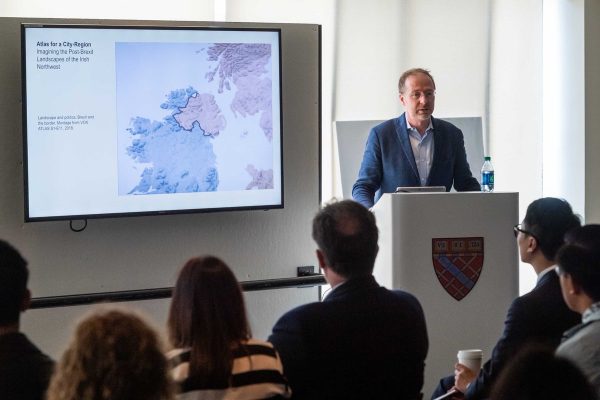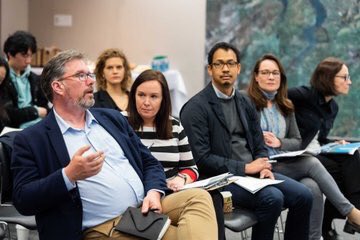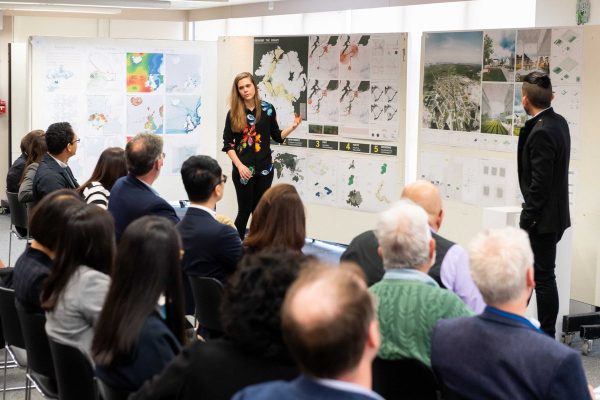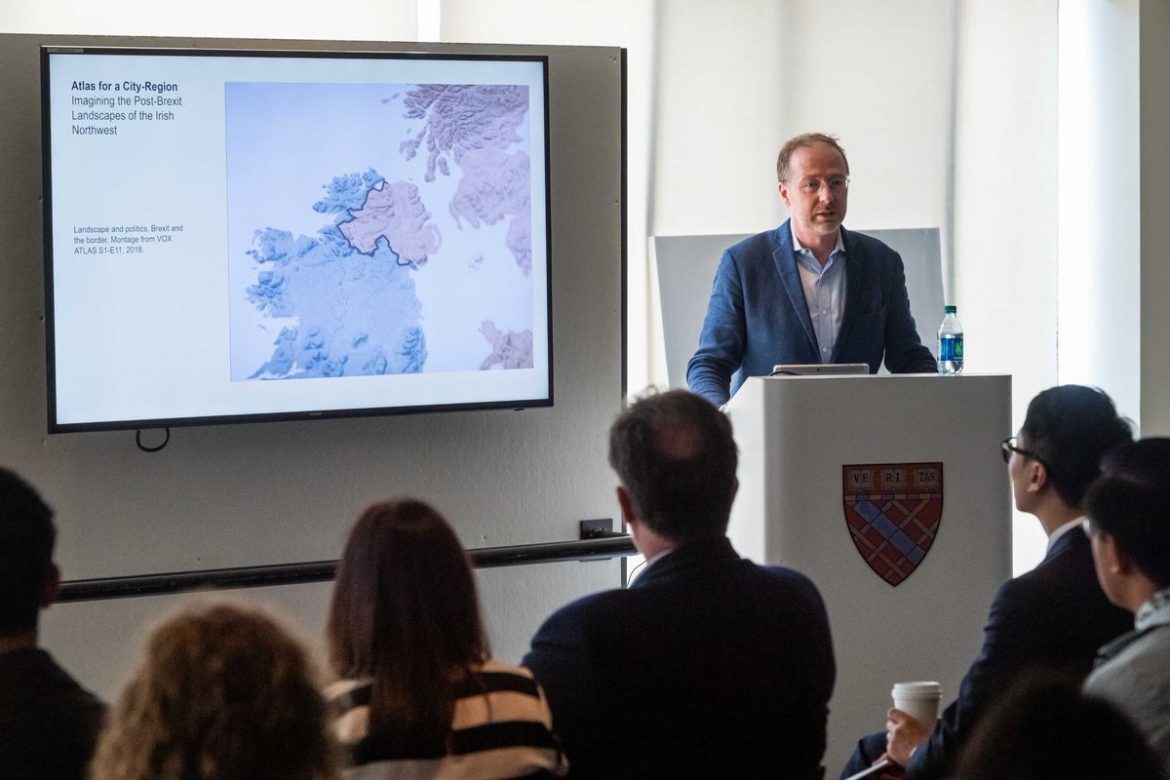 AFTER months of design research including fieldwork in the North West, a group of twelve landscape architecture students from the Harvard University Graduate School of Design (GSD) recently presented their visions for the Northwest city region at a presentation in Cambridge, MA.
AFTER months of design research including fieldwork in the North West, a group of twelve landscape architecture students from the Harvard University Graduate School of Design (GSD) recently presented their visions for the Northwest city region at a presentation in Cambridge, MA.
From the introduction of novel crops such as orange trees, to alternative forms of urban-rural development, the students imagined how the Northwest city region might develop considering the impacts of Brexit and other impending challenges such as climate change, sea level rise, and population increase.
The proposals are one of the three main components of an 18-month sponsored research project that Derry City and Strabane District Council and Donegal County Council have embarked upon with Harvard GSD.
The project, Atlas for a City-Region: Imagining the Post-Brexit Landscapes of the Irish Northwest, is led by Professor Gareth Doherty, from Carndonagh, and Associate Professor and Director of the Landscape Architecture programs at Harvard GSD.
The project’s findings will be finalised by the end of 2019 and presented in the Northwest in Spring 2020.
Most recently, the project included a Harvard GSD studio course this past Spring, taught by Professor Doherty together with Niall Kirkwood, Professor of Landscape Architecture and Technology at the Harvard GSD.
Speaking of the studio, Professor Kirkwood remarked: “The richness of the land and landscape of the Irish North-West, the warmth and intelligence of the people and the vision of the agency and community leaders made the whole studio experience a compelling and creative endeavor for Harvard Design School faculty and students alike.
“In turn, this enabled the resulting planning and design work to project large ideas and themes far into the decades as well as provide smaller scale practical solutions for the villages, towns and cities that we were engaged with.
“I came to learn and admire all those stakeholders involved with shaping and enhancing their collective futures”.
The work was aimed at sparking conversations around key contemporary issues such as borders, migration, and climate change, as highlighted by María Bellalta, Dean, School of Landscape Architecture at the Boston Architectural College.
She observed “through the studio, GSD Faculty and students offered pointed arguments for how regions and communities separated by political boundaries may reposition their future planning strategies to include programmatic frameworks that depend on not only economics, industry and innovation, but which also stimulate renewed social encounters.
“The studies were both speculative and practical, yet consistently founded on the notion of a shared productive boundary or a ‘city region’, and tending toward a cooperative approach, over separate existences.
“The studies have ingeniously provoked insight in all of us, over the multiple spatial and cultural divides we encounter today, and which we must (re)-design as part of our global and ever-expanding arena.”
 The design proposals were presented to a panel of distinguished experts in different fields.
The design proposals were presented to a panel of distinguished experts in different fields.
Katy Hayward, Reader in Sociology at Queen’s University Belfast and an expert on Brexit said of the work: “At a time of acute uncertainty about what Brexit might mean for the Irish border, there is a particular need for innovative and imaginative approaches.
“This is precisely what these students have offered Ireland’s North-West region. Their engagement with the terrain, people and planners in the region itself has helped them produce an array of fantastic ideas and designs.”
Eunan Quinn, Senior Planner with Donegal County Council who participated in the expert panel alongside Karen Philips, Director of Environment and Regeneration with Derry City and Strabane District Council said:
“This work brings a fresh perspective on the regions landscape and seeks to define the place-based issues that the two local authorities’ can continue to work together on”.
Karen Phillips agreed, saying: “This is a unique project and has the potential to bring new thinking and fresh insights that can only enrich plans for the future development of the city region”.







